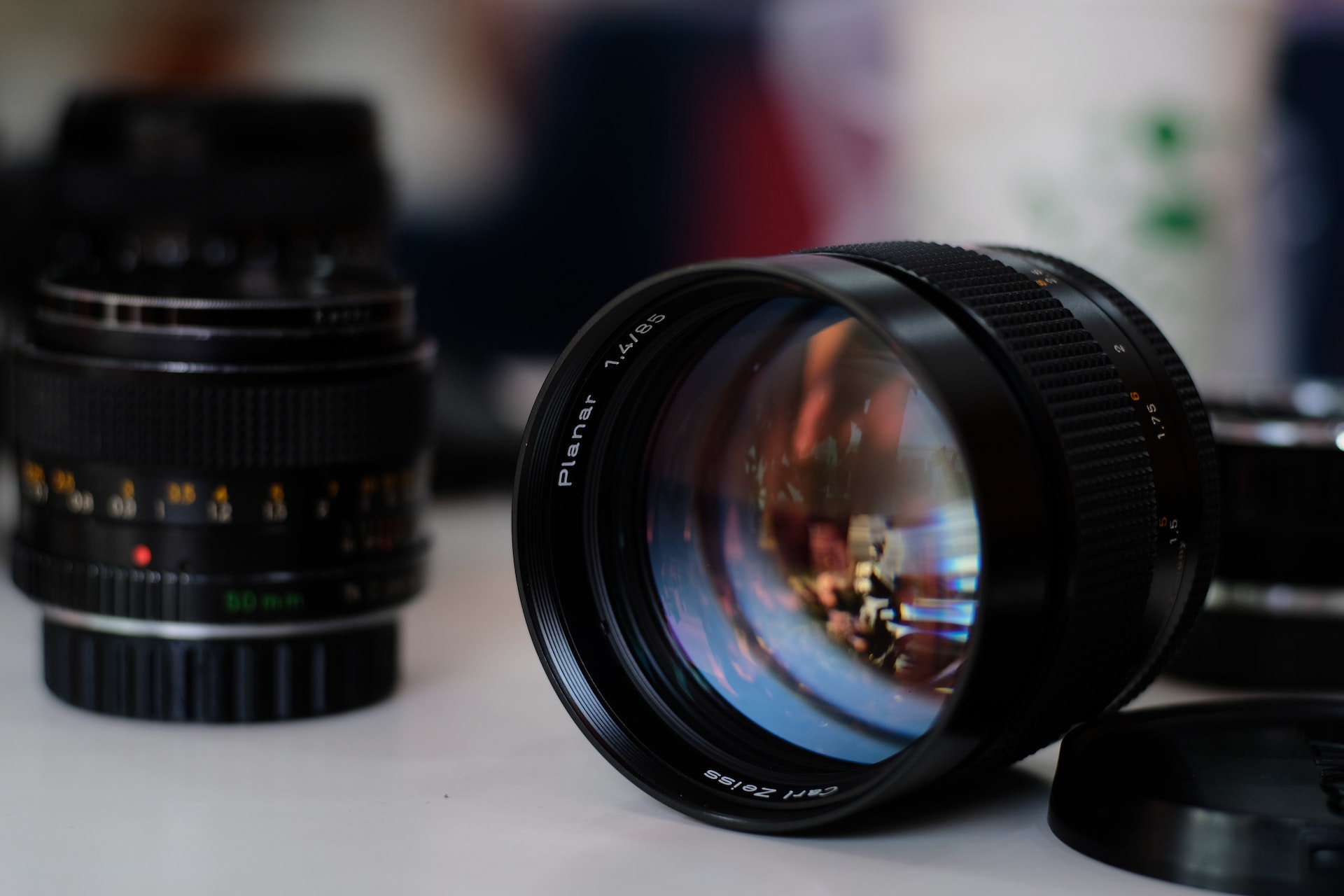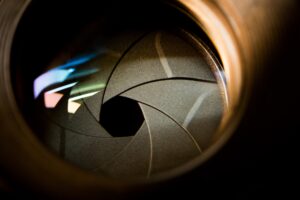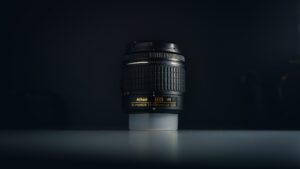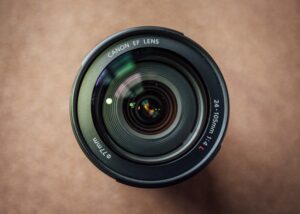Are camera lens protectors necessary? Yes, especially for those who want to maintain the pristine quality of their camera lenses.
From mobile phone cameras to DSLRs, the question about the real necessity of lens protectors always stirs up a discussion.
This article dives deep into the purpose, evolution, and debate surrounding these tiny but significant accessories. So, whether you’re a seasoned photographer or just bought your first camera, stick around to get clarity on lens protectors!
Understanding Camera Lens Protectors
Imagine you’ve invested in a top-notch camera. Now, imagine a tiny scratch, barely visible, right in the middle of your lens. Heartbreaking, right? That’s where camera lens protectors come into play.
What’s a Camera Lens Protector?
Simply put, it’s a guardian. A transparent shield made, typically, of high-quality glass or plastic, designed specifically to fit over your camera lens.
Its primary job? To take on all the brunt of the world—be it accidental bumps, curious fingers, or the grit and dust of an outdoor shoot—ensuring your lens remains untouched.
From the Yesteryears to Now
Lens protectors aren’t a modern gimmick. They’ve been around for quite some time.
Initially, they were made of basic plastic materials, mostly serving as dust covers. But with time, as cameras evolved and photography became more demanding, these protectors had to step up their game.
Today, they’re not just about protection. They come with anti-reflective coatings, UV protection layers, and even advanced hydrophobic coatings to repel water.
In essence, they’ve evolved from mere lens caps to sophisticated barriers against various potential hazards.
So far, we’ve laid down the groundwork about lens protectors and how essential they can be. But are they really crucial for everyone? What do they specifically do? And are there any downsides?
The Core Functionality of Lens Protectors
Photography is an art, and every artist knows the value of their tools. But what good is a tool if it’s not maintained properly?
What Does a Camera Lens Protector Do?
Whether you’re trekking through a rainforest, capturing the vibrant festivities of a street carnival, or just accidentally knocking your camera off a table, the lens protector is your first line of defense. It:
- Protects from scratches: From sand particles on a beach to an accidental brush with keys in your bag, these tiny threats can cause lasting damage. A lens protector keeps them at bay.
- Shields from dust: Dust might seem harmless, but over time, it can embed into your lens, affecting picture quality.
- Filters harmful light: UV lens protectors, in particular, prevent ultraviolet rays from reaching your sensor, ensuring your photos remain free from the blue haze.
A lens protector ensures that your photos remain unhindered by the wear and tear of regular use.
Lens Protector Vs. UV Filter: The Differences
The photography world is rife with terms and accessories, and it’s easy to get caught up in the confusion. Here’s breaking down the primary differences between a lens protector and a UV filter:
Purpose
- Lens Protector: As the name suggests, its main job is protection. It prioritizes safeguarding your lens over any other functionality.
- UV Filter: While it does offer protection, its core purpose is to filter out UV rays, preventing that unwelcome blue cast in your photos.
Material
- Lens Protector: Often made of high-quality transparent material, focusing primarily on durability.
- UV Filter: Usually comes with specialized coatings designed to block out UV light.
Use-case Scenarios
- Lens Protector: Perfect for everyday use. Whether you’re a street photographer, a travel enthusiast, or just someone who’s a tad bit clumsy, a lens protector is your go-to.
- UV Filter: Essential for high-altitude photography or seaside captures where UV reflection can affect the image.
Want to learn more about lens filters? Check out our comprehensive article on whether lens filters are necessary.
The Debate: Necessity of Lens Protectors
Pros of Using Lens Protectors
- Durability: Think of lens protectors as insurance for your expensive lens. They might seem like an additional cost, but the price of replacing or repairing a lens is significantly higher.
- Peace of Mind: Ever been on edge while taking your camera on rough terrains or crowded places? A lens protector lets you focus on the shot, not on potential lens damage.
Modern lens protectors are designed to be unobtrusive. They’re clear, maintain the lens’s quality, and do their job without getting in the way.
Cons of Using Lens Protectors
Not everything’s rosy, though. There are some concerns and potential drawbacks to consider:
- Possible Image Quality Reduction: There’s a debate that adding an extra layer, no matter how transparent, might slightly affect image sharpness.
- Flare and Ghosting: Some photographers have noted that lens protectors can occasionally cause flare or ghosting, especially when shooting directly into a light source.
- Added Expense: While it’s less than the cost of a lens repair, buying a high-quality lens protector still means shelling out some extra cash.
The decision, as they say, isn’t black and white. It hinges on multiple factors: your shooting environment, the kind of photography you’re into, and your personal comfort levels.
But before making a choice, it’s essential to know when these protectors prove their worth the most.
Special Cases: When Are Lens Protectors Most Crucial?
Photography isn’t just about capturing memories; it’s about adventuring into the unknown, exploring different terrains, and sometimes, facing unpredictable circumstances.
In these scenarios, a lens protector can prove to be more than just a useful accessory—it can be a savior.
Outdoor and Travel Photography
As you step outside the comforts of a controlled environment, your camera faces a host of challenges:
- Sand and Dust: Imagine capturing the vastness of a desert or the golden hues of a beach sunset. Now, imagine tiny sand particles scratching your precious lens. A lens protector works as a shield against these natural abrasives.
- Water and Moisture: From misty rainforests to thundering waterfalls, nature’s beauty often comes with moisture, which can be harmful to your lens. Lens protectors can repel water, ensuring those droplets don’t spell disaster for your equipment. To learn more about how water can affect your camera lens, check out our comprehensive guide.
- Abrupt Temperature Changes: The chilly embrace of mountain peaks or the scorching touch of a desert—extreme temperatures can affect your lens. A lens protector can act as a buffer, protecting your lens from sudden temperature-induced contractions or expansions.
Recommended Lens Protector for Travel
When you’re backpacking across diverse landscapes, you’d want a multi-coated lens protector. It not only offers protection against scratches but also minimizes lens flares and ghosting, ensuring top-notch image clarity.
Mobile Photography: Is a Camera Lens Necessary For Your Smartphone?
With the rise of smartphones, everyone’s become a photographer. But how does mobile photography differ, and does it warrant a lens protector?
- Size and Usage: Mobile camera lenses are considerably smaller than their DSLR counterparts. But given our habits, they’re also more prone to scratches—from being kept in pockets with keys to being used frequently.
- Build and Coating: Many high-end smartphones come with lenses that have a scratch-resistant coating. However, over time and with rough usage, even this can wear out.
- Quality Over Quantity: A scratched mobile lens won’t just affect your photography—it’ll mar your video quality, daily selfies, and even your video calls.
Given the multi-functional use of mobile cameras and the frequency of their usage, a lens protector indeed seems like a small price to pay for ensuring long-lasting quality.
Potential Risks Without a Lens Protector
While lens protectors can seem like just another accessory, understanding the dangers your lens faces without one can shed light on their importance.
Scratches, Dust, and Falls
A camera lens functions optimally when its surface is pristine. Dust and minute scratches might seem negligible but can compromise the quality of the image you capture.
- Dust: Tiny dust particles can become abrasive, leading to potential micro-scratches. Over time, these can accumulate, affecting image clarity.
- Falls: An accidental drop can result in more than just scratches; it can shatter the lens or misalign its elements, leading to costly repairs or replacements.
Understanding the Impact of Scratches, Dust and Falls on Your Camera Lens
A simple analogy would be wearing glasses with smudges; while you can still see, the quality of your vision diminishes.
Similarly, scratches on a lens scatter light entering it, leading to decreased sharpness, contrast, and potential lens flares.
The Impact of Environmental Factors on Your Lens
Our environments are rife with factors that can silently erode the lens quality:
- Humidity and Moisture: Prolonged exposure to moisture can lead to fungal growth inside the lens, a menace that’s not only hard to clean but can permanently damage the lens.
- Salt and Pollution: Coastal areas or polluted cities expose lenses to salt and pollutants, which can corrode the lens over time, affecting its lifespan.
- Abrupt Temperature Changes: Just like how a cold glass can crack if hot water is poured into it, a camera lens exposed to sudden temperature variations can experience internal condensation, which is detrimental to its performance.
Proactive Measures to Take to Protect Your Camera Lens
While a lens protector can shield the front element from direct contact, it’s essential to understand that the rest of your gear is exposed.
Hence, investing in weather-sealed equipment and being vigilant about storage conditions goes a long way in ensuring your camera’s longevity.
Our cameras are exposed to a vast range of environments. And while a lens protector offers the first line of defense, how you handle, store, and maintain your camera plays an equally crucial role.
Mitigating Risks Without Lens Protectors
Regular and Proper Lens Cleaning
Every photographer should be armed with the knowledge of proper lens cleaning.
It’s not about a quick wipe-down; it’s a meticulous process that ensures your shots remain as crisp as day one.
- Use a Blower: Start by removing larger dust particles with a blower. Holding your lens downward ensures gravity aids in the process.
- Microfiber Cloth: For smudges and fingerprints, a soft microfiber cloth works wonders. Gentle circular motions are key.
- Lens Cleaning Solution: For stubborn marks, a few drops of a dedicated lens cleaning solution on the cloth can be used. Remember: never pour directly onto the lens.
- Lens Pens: These handy tools have a brush on one end and a cleaning tip on the other. They’re compact and great for on-the-go cleaning.
It’s not just about how you clean but how often. Make it a habit to inspect your lens before and after shoots, ensuring it’s always in top condition.
Camera Case vs. Lens Protector
Your lens protector is the frontline defense, but your camera case is the stalwart guardian that shields your gear from potential threats.
Here’s why a camera case can be good to use as well as a lens protector:
- Padded Pockets: Quality cases have cushioned compartments, ensuring each piece of equipment sits snug and safe from knocks.
- Weatherproofing: For those adventurous shoots in challenging environments, opt for weatherproof or waterproof cases. They guard against moisture, dust, and the elements.
- Accessibility: A good case isn’t just about protection; it’s also about easy access. A quick draw compartment allows you to switch lenses swiftly, ensuring you never miss that perfect shot.
Despite all of these preventative measures, sometimes accidents happen and your camera lens could break. To find out whether it’s possible to fix a camera lens, check out our article here.
Choosing the Right Lens Protector
Not all lens protectors are created equal. Like choosing the perfect lens for a shoot, the right protector should match your photographic needs and environment.
Types of Camera Lens Protectors
Lens protectors come in a smorgasbord of varieties, each with its unique features:
- UV Protectors: More than just a shield, they filter out ultraviolet rays, ensuring your photos aren’t marred by a hazy bluish cast.
- Skylight Protectors: These pinkish-hued protectors reduce the bluish cast of open shade while also serving as a basic protective filter.
- Clear Protectors: A no-frills option, they’re designed solely for protection without any impact on image quality.
- Polarizing Protectors: While primarily filters, they also act as protectors. They reduce reflections and boost the blue of the sky in outdoor photography.
The Material Difference in Lens Protectors
Lens protectors can be crafted from different materials:
- Glass: A classic choice, offers clarity but can be more fragile.
- Polycarbonate: Lighter and more resistant to impact than glass.
- Optical Resin: Usually found in more economical protectors but may not offer the same clarity as glass.
Application and Maintenance
Applying a lens protector is a straightforward process, but precision is key.
- Clean Your Lens: Before application, ensure your lens is spotless. Use a blower, then a lens cleaning solution if necessary.
- Align: Start by aligning the protector with the lens. Some come with guide stickers to help with this step.
- Stick: Once aligned, press down gently, starting from the center and moving outwards to eliminate any air bubbles.
Maintenance Tips:
- Regular Check-ups: Inspect the protector regularly for scratches or smudges that might affect image quality.
- Gentle Cleaning: Use a microfiber cloth for cleaning. Avoid abrasive materials that might scratch the protector.
- Replacement: If a protector gets scratched, replace it. It’s far cheaper than replacing a lens!
The Verdict on Whether Lens Protectors Affect Image Quality
While protection is a lens protector’s primary function, photographers frequently voice concerns regarding their potential impact on image quality.
Do Lens Protectors Compromise on Quality?
One of the biggest myths in the photography community is the assumption that lens protectors degrade image quality. So, let’s dissect this idea:
- Clarity: A high-quality protector will not impact the sharpness or clarity of an image. Quality matters. Higher-end protectors are made with precise optical standards, ensuring no loss of sharpness.
- Lens Flare & Ghosting: Any added layer on a lens can, theoretically, increase the chances of lens flare or ghosting. However, with modern multi-coated protectors, this effect is negligible.
- Color Shift: Some fear a color shift, especially with UV and Skylight protectors. However, in digital photography, UV filters have little to no effect on color, and any shift from skylight protectors is often desired.
A Comparative Table on Image Quality Impact:
| Impact Point | Without Protector | With Quality Protector | With Low-Quality Protector |
|---|---|---|---|
| Sharpness | Optimal | Optimal | Slight Reduction |
| Lens Flare | Standard Risk | Slightly Increased | Increased |
| Color Accuracy | Optimal | Optimal | Possible Shift |
Addressing the Myth vs. Reality
The lens protector debate is often based on individual experiences and anecdotes. While one photographer might swear by them, another might have had a negative experience with a low-quality protector that led to poor results.
Some Points to Consider:
- Anecdotes are not Data: Individual experiences can vary based on the quality of the protector and external conditions.
- Equipment Matters: A top-tier lens paired with a cheap protector is doing the lens a disservice. If you invest in high-quality equipment, ensure your protector matches that quality.
- The Digital Age: Modern digital cameras have advanced sensors less affected by UV light, making some concerns outdated.
Protection or perfection? Often, it’s a balance of both. But as with all things in photography, knowledge and understanding pave the way.
FAQs
Do I Need a Camera Lens Protector?
Not always, but a lens protector offers added protection against scratches, dirt, and minor impacts. It can be especially useful in challenging environments or frequent use.
Do Camera Lens Protectors Affect Picture Quality?
Quality lens protectors are designed to be clear and not affect image quality. However, low-quality protectors or those with smudges/scratches might impact sharpness and clarity.
When Do I Need a Camera Lens Protector?
Consider a protector when shooting in harsh environments, during travel, or if you’re concerned about potential damage from frequent use or accidents.
How Do I Keep My Camera Lens Safe Without a Protector?
Handle with care, use lens caps, store in padded cases, avoid touching the glass, keep away from sand/dirt, and clean with a soft lens cloth regularly.
Wrapping Up: Is a Camera Lens Protector Really Necessary?
In the grand scheme of things, lens protectors are just one of the many tools available to photographers. Their usefulness depends largely on individual needs and shooting environments.
Some Parting Thoughts
- Know Your Needs: Are you often in risky environments? Or is your camera mostly safe in a controlled studio space?
- Quality Matters: If you do decide to get a protector, invest in a good one. Your images, after all, are a reflection of every piece of equipment you use.
- Maintenance: Whether you use a protector or not, regular lens maintenance ensures longevity and pristine image quality.
To use or not to use? The decision lies in your hands, but hopefully, with all the information provided, that choice will be a well-informed one.




![Read more about the article Should I Buy Used Camera Lenses? Insights, Advice & Recommendations [2023]](https://photographyexplorer.com/wp-content/uploads/2023/08/Should-I-Buy-Used-Camera-Lenses-300x200.jpg)




Pingback: Are Camera Lenses Waterproof? What Every Photographer Needs to Know - Photography Explorer